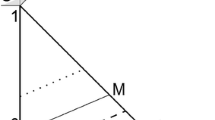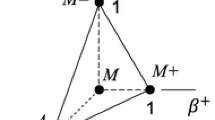Abstract
The impressive properties of shape memory alloys are produced by means of solid-to-solid phase transformations where thermal effects play an important role. In this paper, we present a model for polycrystalline shape memory alloys which takes full thermo-mechanical coupling into account. Starting from the equations of the first and the second law of thermodynamics, we derive evolution equations for the volume fractions of the different martensitic variants and a related equation for heat conduction. A thermodynamic analysis allows to formulate a complete expression for the dissipation caused by phase transformation and heat flux. This allows to model the experimentally well-documented transformation fronts in tension tests by a finite element scheme without further assumptions. Additionally, the number of required model parameters is very small in comparison with phenomenological approaches. Numerical examples are presented which show a good agreement with experimental observations.
Similar content being viewed by others
References
Ball J.M., James R.D.: Fine phase mixtures as minimizers of energy. Arch. Ration. Mech. Anal. 100, 13–52 (1987)
Bouvet C., Calloch S., Lexcellent C.: A phenomenological model for pseudoelasticity of shape memory alloys under multiaxial proportional and nonproportional loadings. Eur. J. Mech. A-Solids 23, 37–61 (1987)
Castensen C., Hackl K., Mielke A.: Non-convex potentials and microstructures in finite-strain plasticity. Proc. R. Soc. A 458, 299–317 (2002)
Dimitrijevic B., Hackl K.: A method for gradient enhancement of continuum damage models. Tech. Mech. 28, 43–52 (2008)
Dimitrijevic B., Hackl K.: A regularization framework for damage-plasticity models via gradient enhancement of the free energy. Int. J. Numer. Meth. Biomed. Eng. 27, 1199–1210 (2011)
Frenzel J. et al.: Influence of Ni on martensitic phase transformations in NiTi shape memory alloys. Acta Mat. 58(9), 3444–3458 (2010)
Goodarzi M., Hackl K.: A model for martensitic microstructure, its geometry and interface effects. PAMM 12, 345–346 (2012)
Govindjee S., Miehe C.: A multi-variant martensitic phase transformation model: formulation and numerical implementation. Comp. Meth. Appl. Mech. Eng. 191, 215–238 (2001)
Govindjee S., Mielke A., Hall G.J.: The free energy of mixing for n-variant martensitic phase transformations using quasi-convex analysis. J. Mech. Phys. Solids 51, 1–26 (2003)
Govindjee S., Hackl K., Heinen R.: An upper bound to the free energy of mixing by twin-compatible lamination for n-variant martensitic phase transformations. Continuum Mech. Thermodyn. 18, 443–453 (2003)
Hackl K.: Generalized standard media and variational principles in classical and finite strain elastoplasticity. J. Mech. Phys. Solids 45, 667–688 (1997)
Hackl K., Fischer F.D.: On the relation between the principle of maximum dissipation and inelastic evolution given by dissipation potentials. Proc. R. Soc. A 464, 117–132 (2008)
Hackl K., Fischer F.D., Svoboda J.: A study on the principle of maximum dissipation for coupled and non-coupled non-isothermal processes in materials. Proc. R. Soc. A 467, 1186–1196 (2011)
Hackl K., Fischer F.D., Svoboda J.: A study on the principle of maximum dissipation for coupled and non-coupled non-isothermal processes in materials (Addendum). Proc. R. Soc. A 467, 2422–2426 (2011)
Hackl K., Heinen R.: A micromechanical model for pretextured polycrystalline shape-memory alloys including elastic anisotropy. Continuum Mech. Thermodyn. 19, 499–510 (2008)
Hackl K., Schmidt-Baldassari M., Zhang W.: A micromechanical model for polycrystalline shape-memory alloys. Mater. Sci. Eng.: A 378(1), 503–506 (2004)
Heinen R., Hackl K.: On the calculation of energy-minimizing phase fractions in shape memory alloys. Comput. Meth. Appl. Mech. Eng. 196, 2401–2412 (2007)
Helm D., Haupt P.: Shape memory behaviour: modelling within continuum thermomechanics. Int. J. Solids Struct. 40, 827–849 (2003)
Holzapfel G.A.: Nonlinear Solid Mechanics. Wiley, New York (2000)
Huo Y., Müller I.: Nonequilibrium thermodynamics of pseudoelasticity. Continuum Mech. Thermodyn. 5, 163–204 (1993)
Junker P., Hackl K.: Numerical simulations of poly-crystalline shape-memory alloys based on a micromechanical model. PAMM 9, 339–340 (2009)
Junker P., Hackl K.: Finite element simulations of poly-crystalline shape memory alloys based on a micromechanical model. Comput. Mech. 47, 505–517 (2011)
Junker P., Hackl K.: About the influence of heat conductivity on the mechanical behavior of poly-crystalline shape memory alloys. Int. J. Struct. Chan. Solids 3, 49–62 (2011)
Junker, P., Hackl, K.: On the numerical simulation of material inhomogeneities due to martensitic phase transformations in poly-crystals. ESOMAT 2009—8th European Symposium on Martensitic Transformations, Prague, Czech Republic. doi:10.1051/esomat/200903007. EDP Sciences ESOMAT 2009 art. 03007 (2009)
Junker, P.: Simulation of Shape Memory Alloys—Material Modeling Using the Principle of Maximum Dissipation. PhD Thesis, urn:nbn:de:hbz:294-33862 (2011)
Kohn R.: The relaxation of double-well energy. Continuum Mech. Thermodyn. 3, 193–236 (1991)
Lexcellent C., Vivet A. et al.: Experimental and numerical determinations of the initial surface of phase transformation under biaxial loading in some polycrystalline shape-memory alloys. J. Mech. Phys. Sol. 50, 2717–2735 (2001)
Mehrabadi M.M., Cowin S.C.: Eigentensors of linear anisotropic elastic materials. Q. J. Mech. Appl. Math. 43, 15–41 (1987)
Mielke A., Theil F., Levitas V.: A variational formulation of rate-independent phase transformations using an extremum principle. Arch. Ration. Mech. Anal. 162(2), 137–177 (2002)
Onsager L.: Reciprocal Relations in Irreversible Processes. I. Phys. Rev. 37, 405–426 (1931)
Ortiz M., Repetto E.A.: Nonconvex energy minimization and dislocation structures in ductile single crystals. J. Mech. Phys. Solids 47, 397–462 (1999)
Pan H., Thamburaja P., Chau F.S.: Multi-axial behavior of shape-memory alloys undergoing martensitic reorientation and detwinning. Int. J. Plast. 23, 711–732 (2007)
Shaw J.A.: Simulations of localized thermo-mechanical behavior in a NiTi shape memory alloy. Int. J. Plast. 16, 541–562 (2000)
Schaefer, A., Wagner, M.F.-X.: Strain mapping at propagating interfaces in pseudoelastic NiTi. ESOMAT 2009—8th European Symposium on Martensitic Transformations, Prague, Czech Republic. doi:10.1051/esomat/200906031, EDP Sciences ESOMAT 2009 art. 06031 (2009)
Stupkiewicz S., Petryk H.: Modelling of laminated microstructures in stress-induced martensitic transformations. J. Mech. Phys. Sol. 50, 2303–2331 (2002)
Stein E., Sagar G.: Theory and finite element computation of cyclic martensitic phase transformation at finite strain. Int. J. Numer. Meth. Eng. 74, 1–31 (2008)
Thamburaja P.: Constitutive equations for martensitic reorientation and detwinning in shape-memory alloys. J. Mech. Phys. Solids 53, 825–856 (1987)
Truskinovsky L.: About the normal growth approximation in the dynamical theory of phase-transitions. Continuum Mech. Thermodyn. 6, 185–208 (1994)
Wagner M.F.-X., Windl W.: Lattice stability, elastic constants and macroscopic moduli of NiTi martensites from first principles. Acta Materialia 56, 6232–6245 (2008)
Waitz T. et al.: Size effects on the martensitic phase transformation of NiTi nanograins. J. Mech. Phys. Solids 55, 419–444 (2007)
Waitz T. et al.: Competing accommodation mechanisms of the martensite in nanocrystalline NiTi shape memory alloys. Mat. Sci. Eng. A 481(482), 479–483 (2008)
Ziegler H.: An Introduction to Thermodynamics. North-Holland, Amsterdam (1977)
Author information
Authors and Affiliations
Corresponding author
Additional information
Communicated by Andreas Öchsner.
Rights and permissions
About this article
Cite this article
Junker, P., Hackl, K. A thermo-mechanically coupled field model for shape memory alloys. Continuum Mech. Thermodyn. 26, 859–877 (2014). https://doi.org/10.1007/s00161-014-0345-x
Received:
Accepted:
Published:
Issue Date:
DOI: https://doi.org/10.1007/s00161-014-0345-x




